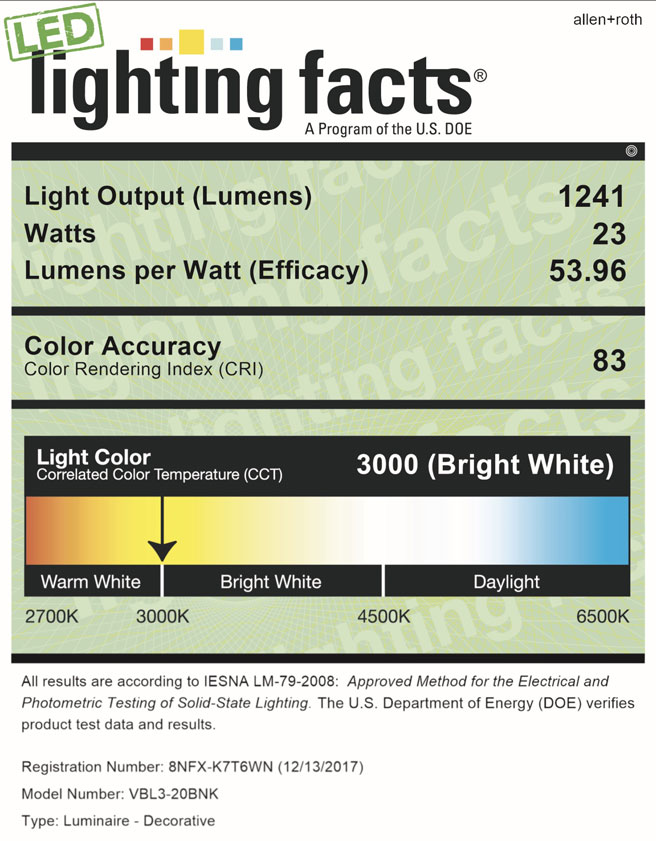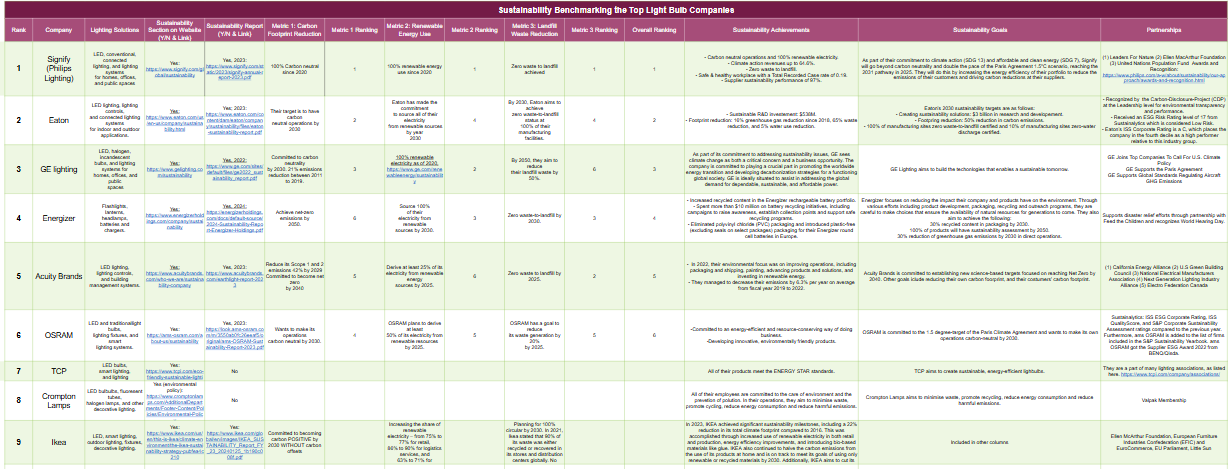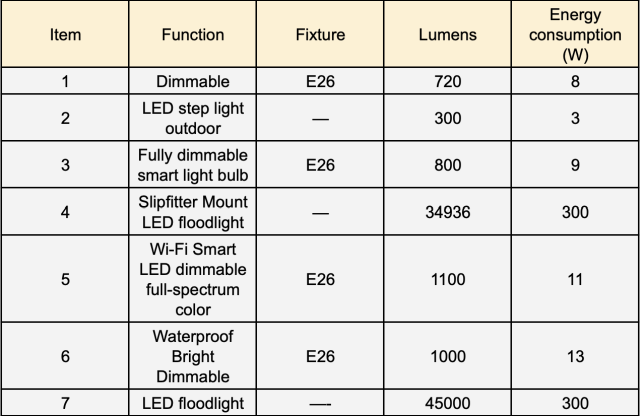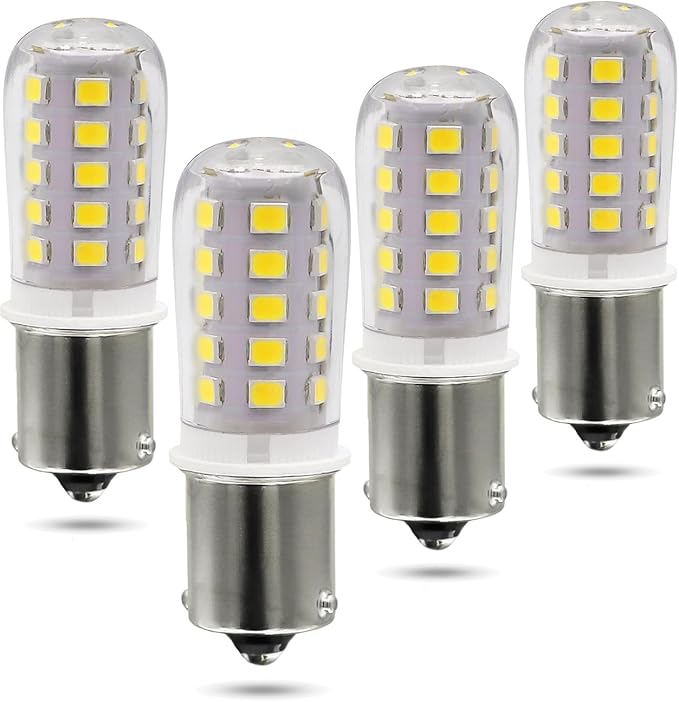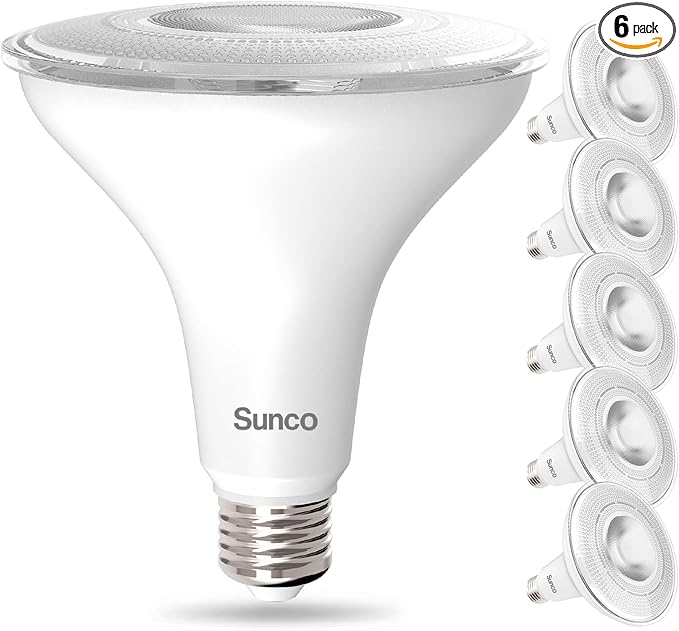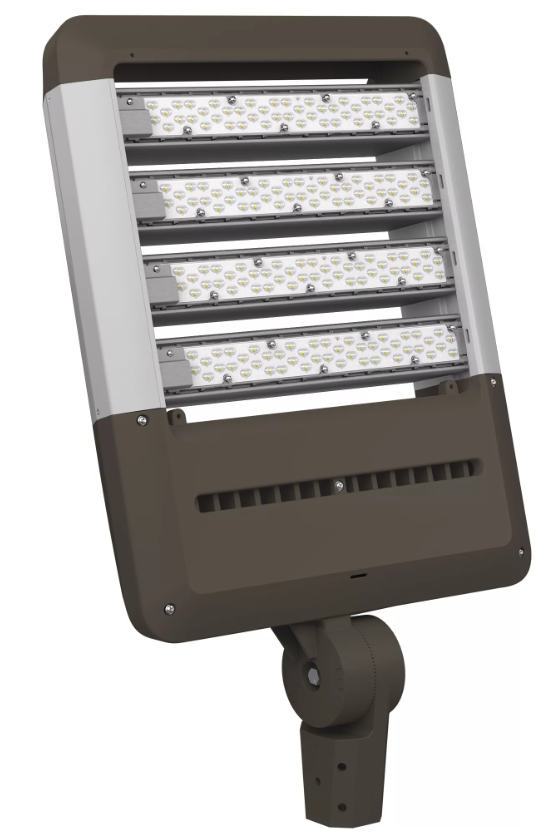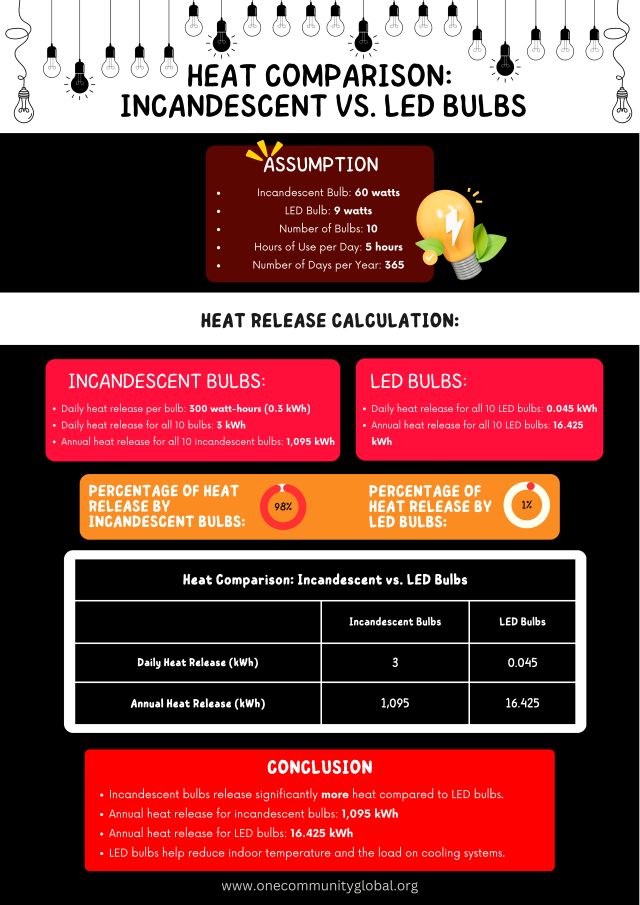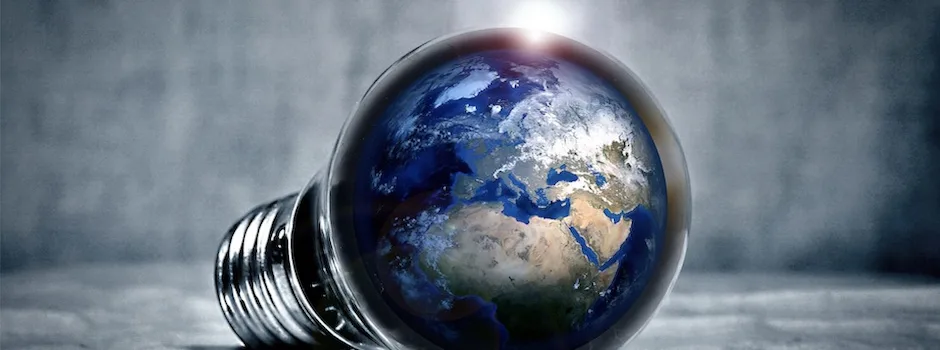
Most Sustainable Lightbulbs and Light Bulb Companies: Research, Energy Savings, and More
Following One Community’s commitment to upholding the Highest Good, we aim to provide an open source and freely available blueprint for ecologically-sustainable and holistic development. To do so, One Community aims to provide directly applicable information about the most sustainable options for everyday materials and systems like lightbulbs, insulation, flooring, paints, adhesives, toilets, shower heads, etc. This page is about our most current research to determine the most sustainable and healthy lighting options and also the best light bulb companies.
This page is a collection of our initial research and will evolve with our experience. It contains the following sections:
- What is a Sustainable Light Bulb
- Why Compare Light Bulbs for Sustainability
- Ways to Contribute and Consultants
- Most Sustainable Light Bulbs and Light Bulb Details
- Types of Bulbs
- The Best Types of Sustainable Light Bulbs
- The Best & Most Sustainable Light Bulb Companies
- The Best Energy-Efficient Light Bulbs
- The Best Energy-Efficient Light Bulbs on Consumer Websites – City Center Case Study
- Best Energy-Saving Practices and Lighting and Lighting Accessories
- The Case For Incandescents
- The Case Against LEDS
- Resources
- Summary
- FAQ
This research is 100% independent and by volunteers. We have not been paid or incentivized in any way.
RELATED PAGES
WHAT IS A SUSTAINABLE LIGHT BULB
 Sustainability is a broad, intersectional concept that encompasses eco-friendliness and longevity as key principles for conserving Earth’s resources and curbing consumerist practices. An ideal sustainable light bulb would avoid materials extracted from the Earth’s crust or those that persist in the environment, and its production would follow sustainable practices. In the best-case scenario, the electricity powering the light bulb would come from renewable energy sources.
Sustainability is a broad, intersectional concept that encompasses eco-friendliness and longevity as key principles for conserving Earth’s resources and curbing consumerist practices. An ideal sustainable light bulb would avoid materials extracted from the Earth’s crust or those that persist in the environment, and its production would follow sustainable practices. In the best-case scenario, the electricity powering the light bulb would come from renewable energy sources.
While no current lighting option meets all of these aspirations perfectly, there are choices that are significantly better for the environment. Below is a list of the criteria we used to evaluate light bulbs:
- Health & Safety: toxic materials, fragility.
- Sustainability: energy efficiency, long lifespan, recyclable materials, reduced light pollution, manufacturing and transportation, energy control.
- Quality: brightness, color temperature, power consumption, smart features.
- Cost
WHY COMPARE LIGHTBULBS FOR SUSTAINABILITY
 Every time someone is looking to buy new light bulbs or replace new ones, sustainability should be the top priority. Light serves not only as a field requiring reduced environmental impact but also as a crucial tool for promoting sustainability. By enhancing energy efficiency in various activities, high-quality lighting solutions can significantly lower energy consumption and foster more sustainable practices across industries and everyday life.
Every time someone is looking to buy new light bulbs or replace new ones, sustainability should be the top priority. Light serves not only as a field requiring reduced environmental impact but also as a crucial tool for promoting sustainability. By enhancing energy efficiency in various activities, high-quality lighting solutions can significantly lower energy consumption and foster more sustainable practices across industries and everyday life.
Good lighting plays a crucial role in various aspects of human life, influencing productivity, well-being, happiness, disease prevention, and safety, all of which have a remarkable direct or indirect impact on sustainability. Beyond simply reducing the environmental footprint of lighting, it is increasingly recognized as a key tool to make other human activities more sustainable. Carefully designed lighting installations, tailored to specific situations and user needs, have contributed to advancements in agriculture, farming, cultural heritage preservation, and the continuity of traditional economic activities. These achievements, which improve productivity without additional environmental costs, are supported by recent scientific discoveries, including the effects of lighting on non-visual pathways that regulate hormones like melatonin and cortisol factors that underpin many of these sustainability-driven improvements.
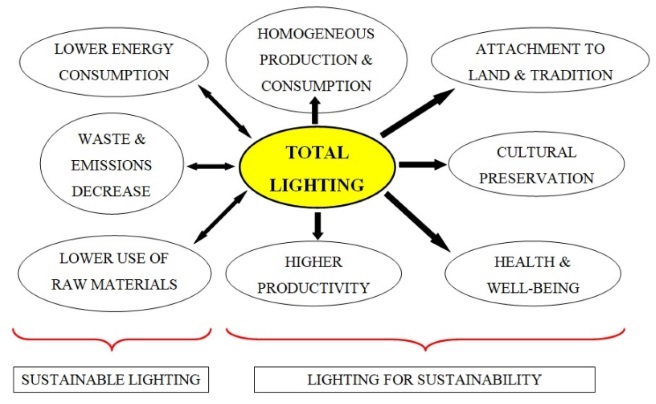
By conducting independent research to identify the best companies, brands and products, One Community aims to identify and purchase only the best and most sustainable option. This will save money, resources, and reduce our environmental impact.
WAYS TO CONTRIBUTE TO EVOLVING THIS SUSTAINABILITY COMPONENT WITH US
SUGGESTIONS | CONSULTING | MEMBERSHIP | OTHER OPTIONS
CLICK THESE ICONS TO JOIN US THROUGH SOCIAL MEDIA
RESEARCHERS FOR THIS COMPONENT:
Brianna Olsen: Sustainability Researcher
Charles Gooley: Web Designer
Elizabeth Kahn: Environmental Consultant
Faisal Rasheed: Graphic Designer
Julia Meaney: Web and Content Reviewer and Editor
Viktoriia Zakharova: Administrative Assistant
Yuran Qin: Web Designer
MOST SUSTAINABLE LIGHTBULBS AND LIGHT BULBS DETAILS
In this section we discuss our research into the most sustainable light bulbs and light bulb manufacturers, types of bulbs, how to choose the most sustainable light bulb, and more. We discuss this with the following sections:
- Types of Bulbs
- The Best Types of Sustainable Light Bulbs
- The Best & Most Sustainable Light Bulb Companies
- The Best Energy-Efficient Light Bulbs – City Center Case Study
- The Best Energy-Efficient Light Bulbs on Consumer Websites
- Item #1: Ledvance Sylvania Tru Wave Natural Series BR30 LED Light Bulb
- Item #2: KAKEMONO 12V BA15S LED Bulb S8 SC
- Item #3: Sengled BR30 Recessed Dimmable LED
- Item #4: RAB FXLED300SFB33
- Item #5: Lightinginside WiFi Smart Bulb
- Item #6: Sunco Outdoor LED PAR38 Wet-rated
- Item #7: Lightdot 300W Outdoor Flood Lights AC100-277V
- Best Energy-Saving Practices and Lighting and Lighting Accessories
- The Case For Incandescents
- Case Against LED’s
- Resources
- Summary
- FAQ
TYPES OF BULBS
There are three main types of bulbs available to the consumer: Incandescent Bulbs, Compact Fluorescent Bulbs (CFLs), and Light-emitting Diodes (LEDs). Less utilized types of light bulbs include halogen, high intensity discharge (HID), and specialty bulbs, such as germicidal bulbs, bug lights, and plant growth lamps. However, the specialty bulbs are usually variations of the three main types, which are discussed below.
INCANDESCENT BULBS: AN OUTDATED MODEL
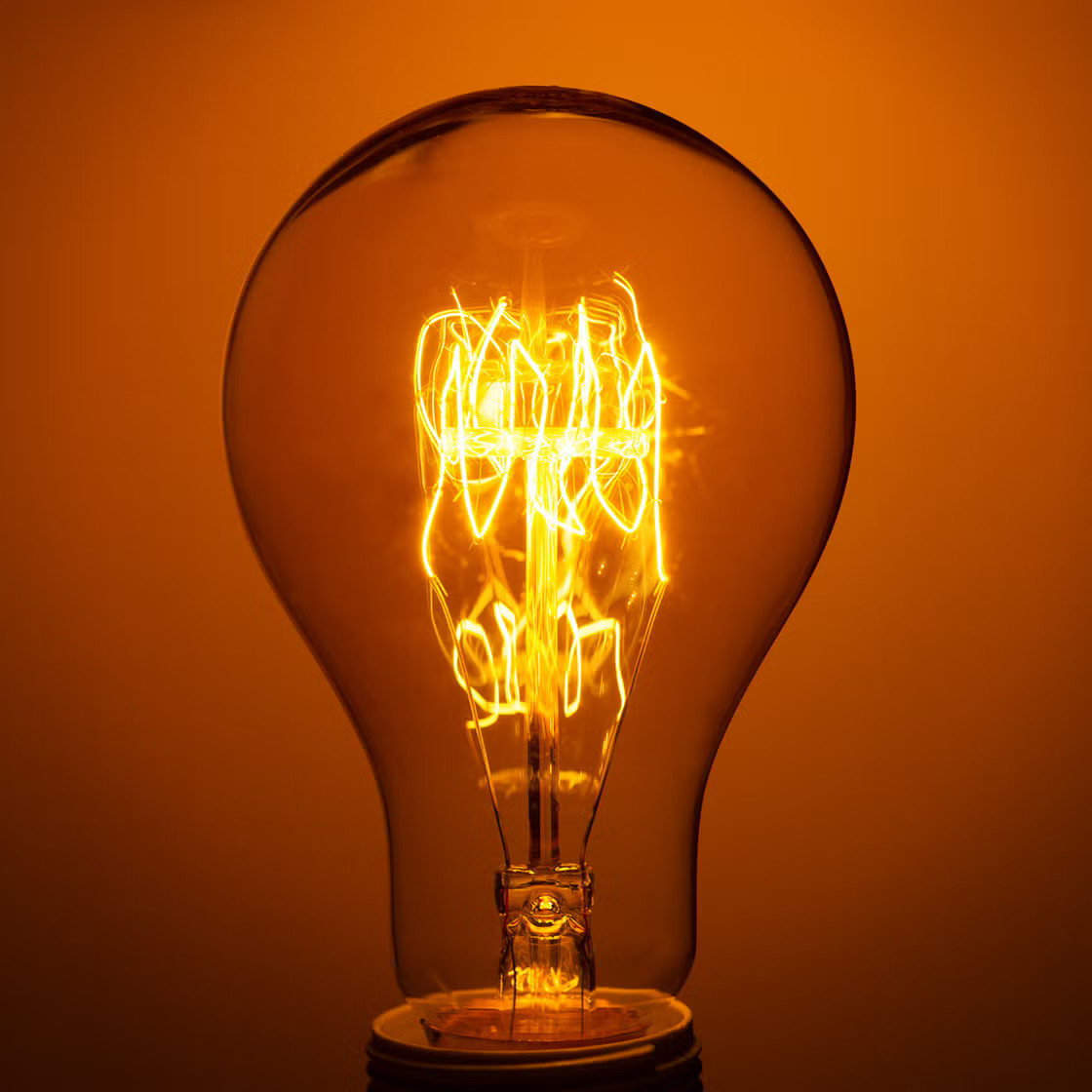 Incandescent bulbs waste a lot of energy because they create light by generating heat, which is around 90% of their output. The unwanted heat also causes customers to increase their use of air conditioning, which contributes to an increase in wasted energy and overall electricity usage, in turn increasing greenhouse gas emissions. There is concern that shorter lifespans of incandescent lights are intentionally engineered to promote more frequent sales. However, the high-quality and radiant heat produced by incandescent bulbs may be preferred in certain situations, such as in cold climates.
Incandescent bulbs waste a lot of energy because they create light by generating heat, which is around 90% of their output. The unwanted heat also causes customers to increase their use of air conditioning, which contributes to an increase in wasted energy and overall electricity usage, in turn increasing greenhouse gas emissions. There is concern that shorter lifespans of incandescent lights are intentionally engineered to promote more frequent sales. However, the high-quality and radiant heat produced by incandescent bulbs may be preferred in certain situations, such as in cold climates.
COMPACT FLUORESCENT LIGHTS (CFLS): A (DEBATABLY) IMPROVED MODEL
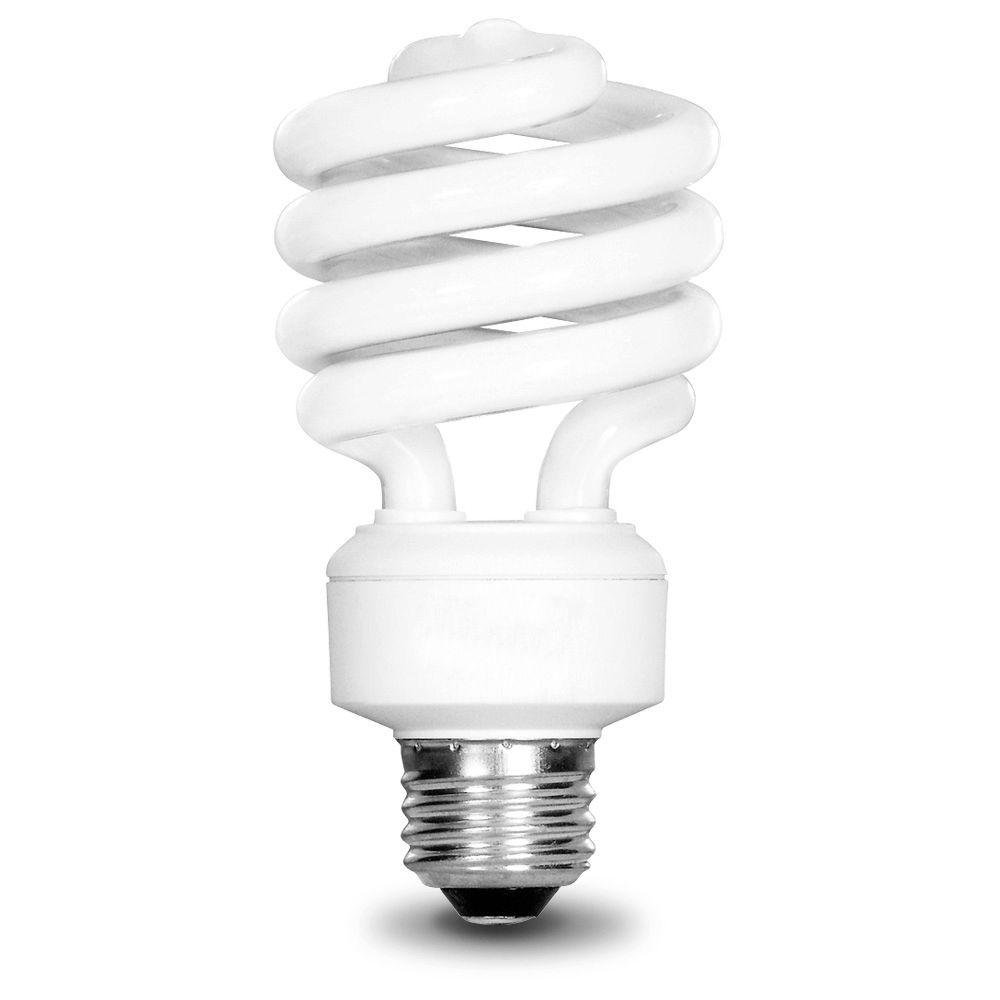 When CFLs first hit the market in the 1980s, they were too bulky and expensive to be a viable option for consumers, but manufacturers have made a lot of improvements since then. The products of today are around $1.74 a bulb in a four-pack, use about 75% less energy than traditional bulbs, and last roughly 10 times as long (about 10,000 hours). CFLs don’t brighten as quickly, however, usually needing up to 3 minutes to heat up and generate bright light. As a result, you may not want to use this gradual light in places where you need immediate visibility. These types of bulbs also don’t work as well as outdoor lighting in cold climates (as CFLs don’t work well in cold temperatures). CFLs also contain small amounts of mercury, so they do need to be disposed of properly.
When CFLs first hit the market in the 1980s, they were too bulky and expensive to be a viable option for consumers, but manufacturers have made a lot of improvements since then. The products of today are around $1.74 a bulb in a four-pack, use about 75% less energy than traditional bulbs, and last roughly 10 times as long (about 10,000 hours). CFLs don’t brighten as quickly, however, usually needing up to 3 minutes to heat up and generate bright light. As a result, you may not want to use this gradual light in places where you need immediate visibility. These types of bulbs also don’t work as well as outdoor lighting in cold climates (as CFLs don’t work well in cold temperatures). CFLs also contain small amounts of mercury, so they do need to be disposed of properly.
LIGHT-EMITTING DIODES (LEDS): THE RECOMMENDED MODEL
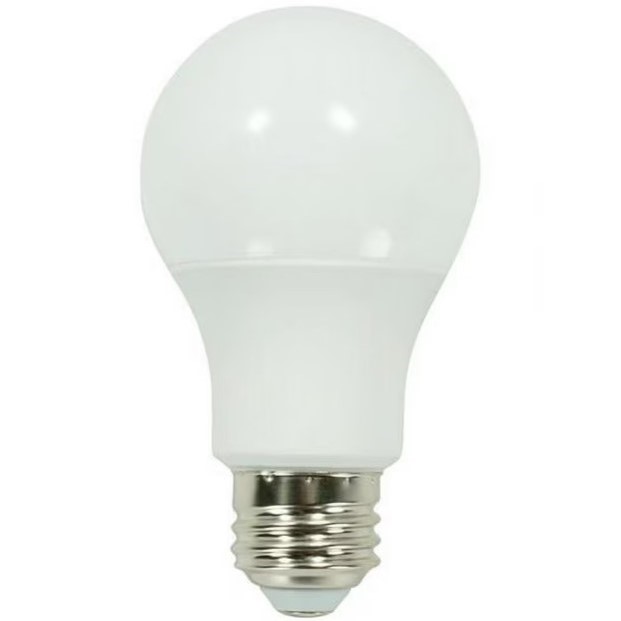 LEDs are the newest type of light bulbs and are considered the most energy-efficient bulbs on the market today. They use less energy than CFLs and last longer. They can last up to 50,000 hours and take only 1-2 seconds to reach maximum brightness. Unlike CFLs, LEDs brighten instantly and can withstand cold temperatures. Using LED bulbs can reduce your lighting consumption by up to 80% each year. On the other hand, LEDs do tend to be more expensive than CFLs.
LEDs are the newest type of light bulbs and are considered the most energy-efficient bulbs on the market today. They use less energy than CFLs and last longer. They can last up to 50,000 hours and take only 1-2 seconds to reach maximum brightness. Unlike CFLs, LEDs brighten instantly and can withstand cold temperatures. Using LED bulbs can reduce your lighting consumption by up to 80% each year. On the other hand, LEDs do tend to be more expensive than CFLs.
HALOGEN, HIGH INTENSITY DISCHARGE, AND SPECIALTY BULBS
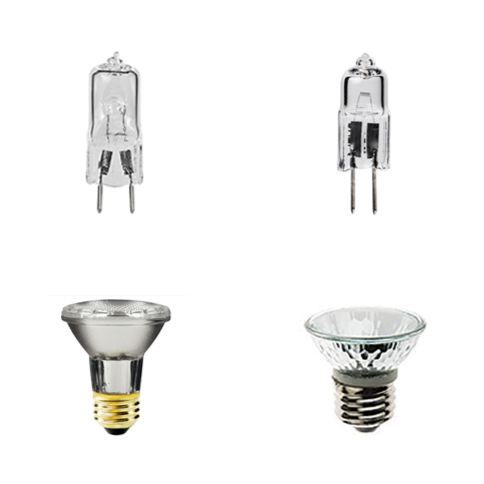 Halogen light bulbs are a type of incandescent bulb that use halogen gas to increase efficiency and lifespan compared to traditional incandescent bulbs. They produce bright, white light and are often used in household lighting, car headlights, and outdoor lighting. However, halogen bulbs are not very energy-efficient, generating a lot of heat and consuming more energy than more sustainable alternatives like LEDs, making them less environmentally friendly.
Halogen light bulbs are a type of incandescent bulb that use halogen gas to increase efficiency and lifespan compared to traditional incandescent bulbs. They produce bright, white light and are often used in household lighting, car headlights, and outdoor lighting. However, halogen bulbs are not very energy-efficient, generating a lot of heat and consuming more energy than more sustainable alternatives like LEDs, making them less environmentally friendly.
High-Intensity Discharge (HID) light bulbs, on the other hand, are highly efficient bulbs that produce light by passing an electric current through a gas-filled tube. Common types include metal halide and sodium vapor bulbs, which are used in large-scale applications like streetlights, stadiums, and industrial lighting due to their high brightness and long lifespan. Though more energy-efficient than halogens, HID bulbs often contain harmful materials such as mercury, posing challenges for sustainability and safe disposal.
Specialty bulbs cover a wide range of lighting products designed for specific uses, such as UV bulbs for sterilization, infrared bulbs for heating, or decorative bulbs for aesthetic lighting. Their sustainability varies greatly depending on the type. Some specialty bulbs, especially those used for niche applications, may not prioritize energy efficiency, and their environmental impact can be higher due to limited recyclability or the use of hazardous materials. While certain specialty LEDs exist that are more eco-friendly, many specialty lighting options lag behind in sustainability compared to standard LED alternatives.
Here is a general comparison of the five different types of bulbs. However, watts and lumens will vary based on the product.
This YouTube video is a basic guide on how to pick the right lightbulb to purchase.
THE BEST TYPES OF SUSTAINABLE LIGHT BULBS
 The most important aspects we should consider when choosing the most sustainable light bulb options are energy consumption/efficiency, lifespan, and the materials with which it is made. It is best to keep energy consumption at as low a rate as possible, because by using less electricity we contribute less to pollution and the greenhouse gas emissions that result from non-renewable electricity production. Energy efficiency, meaning how much energy is wasted in the process of producing light by a light bulb, is also an important aspect. If a light bulb is said to be 80% efficient, it means that for each 100 Wh consumed to generate light, 20 Wh is emitted in other forms of energy like heat. Other key aspects include the lifespan of a bulb and the material with which it is made. If the lifespan of a bulb is longer, we lessen our contribution to light bulb wastes sitting in landfills. A sustainable light bulb should also be made from non-toxic materials that are 100% recyclable. LEDs, the newest type of light bulbs, are known to be the most energy-efficient bulbs on the market today. They use less energy than any other technology and last even longer: up to 50,000 hours, with some brands boasting as many as 100,000 hours. Unlike Compact Fluorescent Light bulbs (CFLs) for example, LEDs brighten instantly and can withstand cold temperatures. Using LED bulbs can also reduce your electricity consumption by up to 80% each year.
The most important aspects we should consider when choosing the most sustainable light bulb options are energy consumption/efficiency, lifespan, and the materials with which it is made. It is best to keep energy consumption at as low a rate as possible, because by using less electricity we contribute less to pollution and the greenhouse gas emissions that result from non-renewable electricity production. Energy efficiency, meaning how much energy is wasted in the process of producing light by a light bulb, is also an important aspect. If a light bulb is said to be 80% efficient, it means that for each 100 Wh consumed to generate light, 20 Wh is emitted in other forms of energy like heat. Other key aspects include the lifespan of a bulb and the material with which it is made. If the lifespan of a bulb is longer, we lessen our contribution to light bulb wastes sitting in landfills. A sustainable light bulb should also be made from non-toxic materials that are 100% recyclable. LEDs, the newest type of light bulbs, are known to be the most energy-efficient bulbs on the market today. They use less energy than any other technology and last even longer: up to 50,000 hours, with some brands boasting as many as 100,000 hours. Unlike Compact Fluorescent Light bulbs (CFLs) for example, LEDs brighten instantly and can withstand cold temperatures. Using LED bulbs can also reduce your electricity consumption by up to 80% each year.
HOW TO READ AN LED LIGHT BULB LABEL
 On the market today there are many choices when it comes to light bulbs and while they all generate light, each one is different. An LED label is similar to the nutrition facts label in packaged foods, it provides the consumer with information about what to expect from the light bulb’s performance. Energy use represents the amount of power it takes to drive a particular light. How much light a light bulb generates is listed as light output, measured in lumens – the more lumens, the brighter the light. Another important parameter is the efficacy, measured in lumens per watts, which tells you how efficient the light bulb will be. Some labels show it, others do not, but you can easily calculate this number yourself by dividing the light output by the energy use. The color of the light can also be found on the bulb packaging and is referred to as color temperature. A low value means a warm light like soft white, while a high value indicates a cool light like daylight. Lastly, there is the color rendering index (CRI) which indicates how closely the colors of objects in the bulb’s light are compared to being in sunlight.
On the market today there are many choices when it comes to light bulbs and while they all generate light, each one is different. An LED label is similar to the nutrition facts label in packaged foods, it provides the consumer with information about what to expect from the light bulb’s performance. Energy use represents the amount of power it takes to drive a particular light. How much light a light bulb generates is listed as light output, measured in lumens – the more lumens, the brighter the light. Another important parameter is the efficacy, measured in lumens per watts, which tells you how efficient the light bulb will be. Some labels show it, others do not, but you can easily calculate this number yourself by dividing the light output by the energy use. The color of the light can also be found on the bulb packaging and is referred to as color temperature. A low value means a warm light like soft white, while a high value indicates a cool light like daylight. Lastly, there is the color rendering index (CRI) which indicates how closely the colors of objects in the bulb’s light are compared to being in sunlight.
ENERGY STAR STANDARD
ENERGY STAR is a government-backed certification program managed by the U.S. Environmental Protection Agency (EPA) that promotes energy efficiency across various products, including lightbulbs. Products with the ENERGY STAR label meet strict energy performance criteria, ensuring they consume less electricity without compromising performance. When choosing a sustainable lightbulb, ENERGY STAR certification is crucial because it guarantees that the bulb not only reduces energy consumption but also lowers greenhouse gas emissions and utility costs. Additionally, these bulbs have a longer lifespan, decreasing waste by reducing the need for frequent replacements. This makes ENERGY STAR-certified bulbs an excellent choice for both environmental and economic sustainability.
To verify if a product is ENERGY STAR certified, look for the blue ENERGY STAR label on the product or packaging. You can also use the Product Finder Tool on the official ENERGY STAR website, search for the product on the manufacturer’s website, or ask retailers for confirmation. Additionally, you can compare the product’s model number with listings on the ENERGY STAR website to ensure it meets the certification standards.
THE BEST & MOST SUSTAINABLE LIGHT BULB COMPANIES
 The purpose of this sustainability benchmark is to identify light bulb companies that are truly committed to sustainable manufacturing practices and thus are producing the most eco-friendly products. A sustainable company is one that ensures the minimization of its environmental footprint throughout the entire product life cycle. For this analysis, our aim is to follow the threshold benchmarking model. This model focuses on determining whether entities meet a certain level of performance in order to show their true commitment to sustainability.
The purpose of this sustainability benchmark is to identify light bulb companies that are truly committed to sustainable manufacturing practices and thus are producing the most eco-friendly products. A sustainable company is one that ensures the minimization of its environmental footprint throughout the entire product life cycle. For this analysis, our aim is to follow the threshold benchmarking model. This model focuses on determining whether entities meet a certain level of performance in order to show their true commitment to sustainability.
The process is done by looking at the weight of achievements and goals regarding three main topics: carbon emissions reduction, renewable energy use, and landfill waste reduction. The metrics are not listed in the order of priority, as all three of them are equally important for the holistic representation of the companies’ commitment to sustainability. The combination of all these aspects work as a threshold for identifying the best light bulb companies when it comes to sustainability.
We will also present the following information for each company: (1) whether or not there is a sustainability section present on their website, (2) whether or not there is a current sustainability report on their website (3), what their important overall sustainability achievements are, (4) what their sustainability goals are, and (5) what partnerships/collaborations they have done.
It is also important to pay attention to the frequency of updating to a sustainability report. Annual reporting is a great representation of how much a company is truly committed to sustainability. Therefore, we will rank these companies considering the latest sustainability report year. We will also consider the weight of achievements and goals in the ranking process. Conflict minerals, water, soil, and air pollution, and social responsibility were also accounted for throughout the research. The following table summarizes this data.
Taking all of this data into consideration, we were able to rank light bulb companies from most to least sustainable. Our rankings identified Signify (formerly Philips Lighting) as the most sustainable company, reaching the exceptional achievements of no landfill waste, carbon neutral operations, and 100% renewable energy use. Not far behind was Eaton, a company that is committed to establishing new science-based targets focused on reaching Net Zero by 2030. Other goals of theirs include reducing not only their own carbon footprint, but their customers’ carbon footprint as well. The third most sustainable company is GE Lighting, followed by Energizer, Acuity Brands, and finally, OSRAM. TCP and Crompton Lamps are added as examples of popular choice among the users, but do not have a ranking due to being in an early stage of their sustainability journey. Ikea is added as a commonly accessible and well-known for sustainability option, but is not ranked as it’s not a solely lighting solutions company.
#1: SIGNIFY
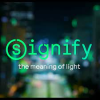 Signify (formerly Philips Lighting) provides a variety of products and solutions for homes and businesses. The company claims sustainability as a part of their DNA and has shown a significant commitment to minimizing their negative environmental impact, encouraging sustainable practices across their operations and supply chain. Signify focuses on energy efficiency and has set lofty goals to lower the energy usage of their goods as well as the carbon footprint of their shipping and manufacturing facilities. Additionally, LED lighting technology was pioneered by Signify, which is substantially more energy-efficient than conventional lighting options. However, it is important to note that the manufacturing of LED lights relies heavily on rare earth minerals. Because of their huge production rate, Signify faces the challenge of minimizing their negative social and environmental impacts from sourcing these minerals.
Signify (formerly Philips Lighting) provides a variety of products and solutions for homes and businesses. The company claims sustainability as a part of their DNA and has shown a significant commitment to minimizing their negative environmental impact, encouraging sustainable practices across their operations and supply chain. Signify focuses on energy efficiency and has set lofty goals to lower the energy usage of their goods as well as the carbon footprint of their shipping and manufacturing facilities. Additionally, LED lighting technology was pioneered by Signify, which is substantially more energy-efficient than conventional lighting options. However, it is important to note that the manufacturing of LED lights relies heavily on rare earth minerals. Because of their huge production rate, Signify faces the challenge of minimizing their negative social and environmental impacts from sourcing these minerals.
Signify is dedicated to fostering a circular economy by decreasing waste and pollution in the production processes, developing products with recycling in mind and working with suppliers to advance sustainable practices all throughout the supply chain. The company’s focus is on designing durable and recyclable products while implementing recycling programs. They also actively work to advance sustainability in society at large. The business has collaborated with groups and governments all over the world to promote environmentally friendly lighting options in common areas like parks and streets. Groups like the Dow Jones Sustainability Index and the Carbon Disclosure Project have honored Signify for their dedication to sustainability. Signify also presents an annual sustainability report to the public to communicate its achievements and future goals.
Signify has demonstrated its commitment to sustainability across various areas. In 2019, a year ahead of schedule, Signify achieved its goal of becoming carbon neutral. Signify has a more robust portfolio of energy-efficient products and emphasizes on its website that sustainability is an integral part of its DNA.
KEY FEATURES
The motivation behind Signify’s sustainability initiatives is a dedication to lessening their negative environmental impact and promoting sustainable practices. The corporation has used a number of strategies to accomplish this goal, including a focus on energy efficiency and the promotion of a circular economy. Signify has established many long-term sustainability goals, one of which is to cut their carbon footprint in half from 2015 levels by 2025, which they achieved ahead of schedule in 2020. Further, Signify achieved its goal of becoming carbon neutral in 2019, a year ahead of schedule. Additionally, by 2025 Signify wants to accomplish zero waste to landfills in all of their manufacturing facilities, convert to entirely renewable electricity, another goal they achieved ahead of time in September 2020. The company also aims to have all of their significant suppliers meet their sustainable supplier standards.
PROS
- Strong commitment to sustainability with challenging sustainability goals.
- Innovation in sustainable products. For example, Philips GreenPower LED grow lights that use up to 40% less energy than traditional high-pressure sodium lamps.
- Utilizing renewable energy for operations and product production.
- Investment in research and sustainable technology.
- Partnership with stakeholders on sustainability projects and initiatives.
- Produces products that meet ENERGY STAR qualifications
CONS
- Challenges in enforcing supply chain sustainability standards.
- Manufacturing consumes a lot of energy.
- Reliance on rare earth metals, whose mining and processing may have negative social and environmental impacts.
- Limited use of recycled materials in product manufacturing.
Why it’s ranked highest:
Signify leads the ranking due to its exceptional achievements, including becoming carbon neutral in 2019 (ahead of its 2020 target), reaching 100% renewable energy use, and achieving zero landfill waste at manufacturing facilities. It also demonstrates industry leadership with innovations like LED technology and circular economy practices, which prioritize recycling and waste reduction. Signify’s strong emphasis on transparency, with annual sustainability reports and recognition from external organizations, underscores its holistic approach to sustainability.
Why others rank lower:
Other companies, while making progress, have not yet achieved comparable milestones like carbon neutrality or 100% renewable energy use. Their commitments often remain future-focused rather than completed goals.
#2: EATON
 As a part of its sustainability initiatives, Eaton develops and produces energy-efficient products, reduces greenhouse gas emissions through sustainable operations, and promotes sustainable supply chain practices. Eaton has established challenging sustainability objectives, such as becoming carbon neutral by 2030. To promote positive change in the sector, the company also interacts with stakeholders to take part in sustainability activities and gain recognition and a positive reputation in the market. Eaton has also set a goal to reduce its greenhouse gas emissions by 50%, compared to its 2015 baseline. They are also committed to sourcing 100% of their electricity from renewable sources by 2030. Eaton has also implemented a variety of energy efficiency programs and has reduced its waste generation by 25% since 2015. Eaton’s progress of its sustainability plan is reported annually.
As a part of its sustainability initiatives, Eaton develops and produces energy-efficient products, reduces greenhouse gas emissions through sustainable operations, and promotes sustainable supply chain practices. Eaton has established challenging sustainability objectives, such as becoming carbon neutral by 2030. To promote positive change in the sector, the company also interacts with stakeholders to take part in sustainability activities and gain recognition and a positive reputation in the market. Eaton has also set a goal to reduce its greenhouse gas emissions by 50%, compared to its 2015 baseline. They are also committed to sourcing 100% of their electricity from renewable sources by 2030. Eaton has also implemented a variety of energy efficiency programs and has reduced its waste generation by 25% since 2015. Eaton’s progress of its sustainability plan is reported annually.
KEY FEATURES
Eaton shows their commitment to sustainability by setting goals for lowering their water use. They aim to certify 10% of their manufacturing sites as zero water discharge by the year 2030. Also by this year, the company aims to have carbon neutral operations and to send no waste from their manufacturing plants to landfills. Eaton has made the commitment to source all of their electricity from renewable sources by year 2030. Additionally, the corporation develops and produces energy-saving goods like lighting solutions, electric vehicle charging stations, and power management systems. Some of Eaton’s sustainability initiatives include recycling, composting, and rainwater collection. They have shown success towards these initiatives, with 94% of their manufacturing waste in 2021 being diverted away from landfills through reuse, recycling, composting, or waste-to-energy.
PROS
- Using 2015 as a baseline, Eaton has set a goal to cut 50% of their greenhouse gas emissions intensity by 2030.
- Eaton already achieved a 38% reduction in carbon intensity by the year 2020.
- Eaton reached an 84% waste diversion rate in 2020, which means that 84% of their waste was recycled, repurposed, or turned into energy.
- Produces products that meet ENERGY STAR qualifications.
CONS
- Despite the company’s attempts to reduce emissions, Eaton’s 2020 scope 1 emissions (direct emissions from owned or controlled sources) and scope 2 emissions (indirect emissions from the generation of purchased energy) came to about 813,000 metric tons of CO2, which is still a sizable amount.
- Reliance on rare metals earth, whose mining and processing may have negative social and environmental impacts.
- Some of Eaton’s products, such as their diesel generators, indirectly increase greenhouse gas emissions due to their use of fossil fuels.
Why it’s ranked second:
Eaton is close behind Signify with ambitious goals, such as achieving carbon neutrality and sourcing 100% renewable electricity by 2030. The company has shown significant progress, such as reducing greenhouse gas emissions by 38% and diverting 94% of its waste from landfills. Eaton also incorporates sustainable product innovations, like energy-efficient lighting and EV charging stations.
Why it’s ranked lower than Signify:
Eaton’s targets are still in progress, whereas Signify has already achieved its goals for carbon neutrality and renewable energy. Additionally, Eaton’s current emissions and reliance on fossil fuels, such as diesel generators, highlight room for improvement.
#3: GE LIGHTING
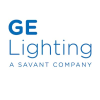 GE Lighting offers lighting solutions that are energy-efficient for use in commercial, industrial, and residential settings. The company has applied specialized product design concepts to ensure that their products are sustainable. The company has set ambitious sustainability objectives to reduce their carbon emissions, energy consumption, and water usage. Some of these objectives are carbon neutrality by 2030, reducing their landfill waste by 50% and their water usage by 25% by 2025. The company is committed to reducing their environmental impact, as evidenced by their focus on closed-loop waste management, sustainable product design principles, and energy-efficient lighting solutions. GE lighting produces a sustainability report annually to keep track of their advancement and communicate it to the public.
GE Lighting offers lighting solutions that are energy-efficient for use in commercial, industrial, and residential settings. The company has applied specialized product design concepts to ensure that their products are sustainable. The company has set ambitious sustainability objectives to reduce their carbon emissions, energy consumption, and water usage. Some of these objectives are carbon neutrality by 2030, reducing their landfill waste by 50% and their water usage by 25% by 2025. The company is committed to reducing their environmental impact, as evidenced by their focus on closed-loop waste management, sustainable product design principles, and energy-efficient lighting solutions. GE lighting produces a sustainability report annually to keep track of their advancement and communicate it to the public.
KEY FEATURES
GE Lighting is dedicated to sustainability through a number of initiatives. They focus on energy-efficient products like LED and smart lighting solutions while also implementing a circular economy strategy that prioritizes recycling and reusing products. Further, their operations are partially run using renewable energy, but their goal is to become carbon neutral by 2030. Additionally, GE Lighting makes investments in innovation and works with other organizations to create sustainable lighting solutions. The company also pushes its clients to adopt greener practices and collaborates with organizations and authorities to carry out significant sustainable lighting initiatives. One of these collaborations is the agreement that GE signed with the International Renewable Agency (IRENA) last year at the COP 27 conference. This agreement aims to foster collaboration on several specific pillars including decarbonization, thought leadership, and the adoption and sustainable use of all forms of renewable energy.
PROS
- The company has recycled more than 7.5 million pounds of lighting components, cutting down on waste and protecting natural resources.
- The Louiville, Kentucky location of GE Lighting uses only renewable energy, lowering the company’s carbon footprint.
- Produces products that meet ENERGY STAR qualifications.
CONS
- GE Lighting has a substantial environmental impact. The company claimed to have released over 1 million metric tons of CO2e in 2019.
- Reliance on rare metals earth, whose mining and processing may have negative social and environmental impacts.
- GE Lighting’s LED lighting solutions can be more expensive initially than conventional lighting options.
Why it’s ranked third:
GE Lighting earns its position due to its focus on sustainable product design (e.g., energy-efficient LED and smart lighting) and its commitment to carbon neutrality by 2030. The company has achieved notable milestones, such as recycling over 7.5 million pounds of lighting components and using renewable energy at key facilities.
Why it’s ranked lower than Eaton:
While GE Lighting’s goals align with Eaton’s, it lacks the same breadth of achieved progress. For example, Eaton has demonstrated significant reductions in emissions and waste diversion, whereas GE Lighting’s emissions remain relatively high (over 1 million metric tons CO2e in 2019).
#4: ENERGIZER
 Energizer Holdings has shown their dedication to sustainability by launching programs meant to lessen their impact on the environment and encourage ethical sourcing. The company focuses on product design and innovation to create products that are more durable and energy-efficient while also enhancing their production methods. They work closely with their suppliers in order to ensure ethical and sustainable sourcing of raw materials and to ensure they reach their goal of a 50% reduction in greenhouse gas emissions by 2030. Energizer has a strong commitment to promoting ethical consumption and production while reducing their negative environmental impacts, as evidenced by their extensive environmental management system and annual reporting on sustainability performance.
Energizer Holdings has shown their dedication to sustainability by launching programs meant to lessen their impact on the environment and encourage ethical sourcing. The company focuses on product design and innovation to create products that are more durable and energy-efficient while also enhancing their production methods. They work closely with their suppliers in order to ensure ethical and sustainable sourcing of raw materials and to ensure they reach their goal of a 50% reduction in greenhouse gas emissions by 2030. Energizer has a strong commitment to promoting ethical consumption and production while reducing their negative environmental impacts, as evidenced by their extensive environmental management system and annual reporting on sustainability performance.
KEY FEATURES
With targets to cut its overall trash creation by 5% annually and 50% of greenhouse gas emissions by 2030, Energizer Holdings has shown their commitment to sustainability. The corporation has put in place a number of measures to lessen their environmental impact, such as designing products that are more durable and energy-efficient and encouraging the use of rechargeable batteries to cut down on waste. Energizer has also set up programs to address potential environmental and social concerns within the supply chain including conflict minerals. One example is their formal sustainability program that specifically focuses on environmental, social and governance (ESG) issues. They also work closely with suppliers to ensure responsible and sustainable sourcing of raw materials.
PROS
- The company has made efforts to increase the recycled content in their batteries, which promotes resource conservation and reduces waste.
- Packaging material design for recyclability: packaging has a specific icon that informs customers with recycling streams.
CONS
- Reliance on rare metals earth, whose mining and processing may have negative social and environmental impacts.
- Reliance on natural gas: The company’s greenhouse gas emissions are primarily attributed to on-site natural gas combustion. Reliance on fossil fuels contributes to carbon emissions and climate change.
- Limited information on renewable energy use: The report does not mention the company’s efforts or targets for transitioning to renewable energy sources, which could further reduce greenhouse gas emissions.
- Limited scope of emissions reduction by 30% by 2030 may not fully address the urgency of climate change and the need for more ambitious targets.
Why it’s ranked fourth:
Energizer demonstrates commitment to sustainability through product innovation, such as increasing recycled content in batteries and promoting energy-efficient, durable designs. The company has clear goals, like reducing greenhouse gas emissions by 50% by 2030 and annual waste reduction.
Why it’s ranked lower than GE Lighting:
Energizer’s sustainability goals are narrower in scope, with limited progress on renewable energy transitions and a lower level of transparency about broader environmental impacts. GE Lighting shows stronger progress in areas like recycling and renewable energy use.
#5: ACUITY BRANDS
 A leading supplier of lighting and building management systems, Acuity Brands is dedicated to sustainability. Guided by their Net Zero Strategy, the company is in the process of installing solar panels in their facilities for a gradual switch to renewable energy sources, while Signify is already running on 100% clean energy since 2020. The firm has a thorough sustainability strategy that prioritizes lowering environmental impact, enhancing social responsibility, and generating profit. Through a combination of energy-efficient products, ethical operations, and sustainable business practices, Acuity Brands seeks to fulfill its sustainability goals. They have set goals for cutting back on water use and waste and aim to have 90% of its products recyclable and reused by 2025. Additionally by 2025, they seek to reduce their energy intensity by 30% compared to the baseline year of 2016. Further, they are attempting to incorporate circular design ideas into their products and packaging. In terms of social sustainability, Acuity Brands is dedicated to giving their employees a safe and inclusive work environment. The company focuses on programs and areas of social justice, education, sustainability, and encourages community involvement and charity. Acuity Brands also shares an annual sustainability report with the public, highlighting its accomplishments and outlining its future objectives.
A leading supplier of lighting and building management systems, Acuity Brands is dedicated to sustainability. Guided by their Net Zero Strategy, the company is in the process of installing solar panels in their facilities for a gradual switch to renewable energy sources, while Signify is already running on 100% clean energy since 2020. The firm has a thorough sustainability strategy that prioritizes lowering environmental impact, enhancing social responsibility, and generating profit. Through a combination of energy-efficient products, ethical operations, and sustainable business practices, Acuity Brands seeks to fulfill its sustainability goals. They have set goals for cutting back on water use and waste and aim to have 90% of its products recyclable and reused by 2025. Additionally by 2025, they seek to reduce their energy intensity by 30% compared to the baseline year of 2016. Further, they are attempting to incorporate circular design ideas into their products and packaging. In terms of social sustainability, Acuity Brands is dedicated to giving their employees a safe and inclusive work environment. The company focuses on programs and areas of social justice, education, sustainability, and encourages community involvement and charity. Acuity Brands also shares an annual sustainability report with the public, highlighting its accomplishments and outlining its future objectives.
KEY FEATURES
Acuity Brands has proven their dedication to sustainability through energy-efficient products, green manufacturing techniques, employee engagement on sustainability, and sustainable supply chain management. They have put policies in place to reduce their environmental impact and collaborate with suppliers to ensure ethical sourcing. Acuity Brands continues to give sustainability top priority in all aspects of their business operations and has made considerable efforts to enhance their sustainability performance.
PROS
- Since 2006, the company has assisted their clients in saving more than 100 billion kilowatt hours of electricity.
- Also since 2006, Acuity Brands’ extensive environmental management system has assisted the business in reducing greenhouse gas emissions by 39%.
- Produces products that meet ENERGY STAR qualifications.
- Implementation of recycling programs and production-line waste reduction.
CONS
- Energy-efficient lighting products’ price may prevent their widespread use in specific markets, which could have an effect on sales and revenue for the company.
- The company is challenged when it comes to allocating sufficient resources (financial and human) to sustain and expand sustainability initiatives.
- The company has expressed they feel challenged by the task of aligning stakeholders (customers, shareholders, employees…) with their sustainability practices.
- Reliance on rare metals earth, whose mining and processing may have negative social and environmental impacts.
Why it’s ranked fifth:
Acuity Brands has made progress with initiatives like helping customers save over 100 billion kilowatt-hours of electricity and reducing greenhouse gas emissions by 39% since 2006. It has set achievable goals, such as making 90% of products recyclable and reducing energy intensity by 30% by 2025.
Why it’s ranked lower than Energizer:
While Acuity Brands has impactful goals, its reliance on future progress and challenges in aligning stakeholders with sustainability efforts lower its ranking. Energizer has more established progress in product design and sourcing practices.
#6: OSRAM
 Osram is a global lighting manufacturer that has adopted environmentally friendly production techniques to help meet their ambitious sustainability targets of a 50% reduction in carbon emissions by 2025 and a 100% circular economy also by that year. These initiatives include the use of renewable energy sources and closed-loop waste management. Additionally, the company provides energy-saving lighting options, encourages sustainable supply chain management, and has started a number of programs to support diversity and inclusion as well as the security and the wellbeing of its workers. Osram produces a sustainability report annually to keep track of their advancement and communicate it to the public.
Osram is a global lighting manufacturer that has adopted environmentally friendly production techniques to help meet their ambitious sustainability targets of a 50% reduction in carbon emissions by 2025 and a 100% circular economy also by that year. These initiatives include the use of renewable energy sources and closed-loop waste management. Additionally, the company provides energy-saving lighting options, encourages sustainable supply chain management, and has started a number of programs to support diversity and inclusion as well as the security and the wellbeing of its workers. Osram produces a sustainability report annually to keep track of their advancement and communicate it to the public.
KEY FEATURES
Osram presents core competencies in sustainable production methods, energy-efficient lighting solutions, and sustainable production methods. They created an internal sustainability program to provide smart lighting options and apply sustainable product design principles. Osram has also started programs for social welfare and education, such as the Osram Licht AG Foundation. Osram has no significant sustainability achievements, but is committed to important goals like becoming carbon-neutral by 2030 – a goal that was reached by Signify in September of 2020. The sustainability initiatives of Osram encompass ethical sourcing and purchasing, worker health and safety, and waste and water reduction.
PROS
- Osram has made a significant commitment to sustainability, setting ambitious environmental goals to cut carbon emissions and develop a circular economy by 2025.
- Osram lessens their influence on the environment by using closed-loop waste management and renewable energy sources in their production operations.
- Osram has put efforts in place to encourage diversity and inclusion and to guarantee the safety and wellbeing of their employees.
- Produces products that meet ENERGY STAR qualifications.
CONS
- Osram uses hazardous components in their products, such as the mercury found in some of their lighting solutions.
- Reliance on rare metals earth, whose mining and processing may have negative social and environmental impacts.
- Although the company has taken steps to assure the safe handling and disposal of these materials, there are still dangers to the environment and human health when using them.
- Osram has come under fire for its involvement in contentious projects, such as the lighting scheme for an Indonesian coal-fired power plant. This calls into doubt the firm’s dedication to minimizing its carbon footprint and advancing sustainability.
Why it’s ranked sixth:
OSRAM has set ambitious goals, like achieving a circular economy by 2025 and carbon neutrality by 2030. It has implemented renewable energy use and closed-loop waste management in its production processes, along with initiatives promoting diversity and social welfare.
Why it’s ranked lower than Acuity Brands:
OSRAM’s ranking is lower due to limited transparency in its sustainability achievements and controversies surrounding projects like involvement in coal-fired power plant initiatives. Acuity Brands has a longer track record of sustainability accomplishments.
#7: TCP
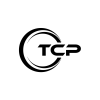 Sustainability is a crucial component of TCP’s business strategy as a provider of lighting solutions. Some of the company’s sustainability initiatives are energy efficiency, waste reduction, ethical sourcing, and community involvement. TCP has put in place a number of steps to reduce their impact on the environment, including producing LED lighting products that use less energy, using recycled materials in their packaging, and putting waste reduction and recycling programs in place at their manufacturing plants. TCP also encourages sustainable forestry methods and sources materials ethically. They have reduced their carbon emissions by over 50% since 2017, and have committed to using 100% renewable energy by 2025. Additionally, they have implemented sustainable practices throughout their supply chain, including using eco-friendly packaging.
Sustainability is a crucial component of TCP’s business strategy as a provider of lighting solutions. Some of the company’s sustainability initiatives are energy efficiency, waste reduction, ethical sourcing, and community involvement. TCP has put in place a number of steps to reduce their impact on the environment, including producing LED lighting products that use less energy, using recycled materials in their packaging, and putting waste reduction and recycling programs in place at their manufacturing plants. TCP also encourages sustainable forestry methods and sources materials ethically. They have reduced their carbon emissions by over 50% since 2017, and have committed to using 100% renewable energy by 2025. Additionally, they have implemented sustainable practices throughout their supply chain, including using eco-friendly packaging.
KEY FEATURES
Some of the features that enhance the sustainability practices of TCP are energy-efficient LED lighting solutions, waste reduction, ethical sourcing, and community participation initiatives. The company’s sustainability programs seek to reduce their negative environmental impacts, while simultaneously promoting community engagement by collaborating with local institutions to provide energy-efficient educational resources.
PROS
- TCP’s LED lighting products are up to 85% more energy-efficient than conventional lighting.
- TCP recycles their materials to use again in packaging.
- TCP uses sustainable forestry techniques for acquiring materials.
- Produces products that meet ENERGY STAR qualifications.
CONS
- TCP does not publish in-depth information about its social responsibility or environmental impact activities.
- Lack of transparency of delivering information to the public through publishing a sustainability report.
Why it’s ranked seventh:
TCP shows promising progress in sustainability, such as reducing carbon emissions by 50% since 2017 and committing to 100% renewable energy by 2025. Its LED products are highly energy-efficient, and it has taken steps toward waste reduction and sustainable sourcing.
Why it’s ranked lower than OSRAM:
TCP lacks transparency, as it does not provide detailed sustainability reports or publicly document its social responsibility activities. OSRAM has a more established framework for reporting and broader sustainability initiatives.
#8: CROMPTON LAMPS
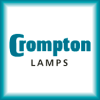 Crompton Lamps provides a variety of goods, including LED fixtures and bulbs. The energy efficiency of Crompton Lamps’ products is one of their main environmental advantages. Moreover, the durability and longevity of Crompton Lamps’ products can help decrease waste and preserve resources over time. In their operations, they seek to promote recycling as well as a reduction in energy consumption and harmful emissions. However, their lack of transparent reporting on their environmental impact makes it difficult to truly assess their sustainability efforts.
Crompton Lamps provides a variety of goods, including LED fixtures and bulbs. The energy efficiency of Crompton Lamps’ products is one of their main environmental advantages. Moreover, the durability and longevity of Crompton Lamps’ products can help decrease waste and preserve resources over time. In their operations, they seek to promote recycling as well as a reduction in energy consumption and harmful emissions. However, their lack of transparent reporting on their environmental impact makes it difficult to truly assess their sustainability efforts.
KEY FEATURES
Crompton Lamps delivers durable and energy-efficient lighting products with a dedication to lowering waste and enhancing recycling efforts. The corporation is looking into renewable energy solutions and has set a goal to lower its carbon impact by 50% for 2023. Even though there is space for improvement in terms of transparency on its supplier code of conduct, Crompton Lamps participation in the Ethical Trading Initiative shows a commitment to addressing these problems.
PROS
- Energy-efficient lighting options that customers can use to cut back on energy use and carbon emissions.
- To ensure that its items are disposed of appropriately, it offers free recycling services to its clients.
- Commitment to researching renewable energy solutions and lowering its carbon footprint.
CONS
- Limited openness on their overall social responsibility initiatives and environmental impact.
- Lack of transparency of delivering information to the public through publishing a sustainability report.
Why it’s ranked eighth:
Crompton Lamps prioritizes energy efficiency, durable product design, and recycling efforts. Its participation in the Ethical Trading Initiative highlights its interest in sustainability and ethical sourcing.
Why it’s ranked the lowest:
Crompton Lamps falls behind due to its lack of transparency and insufficient reporting on sustainability progress. Its goals, while valuable, remain limited in scope compared to other companies higher in the ranking.
THE BEST ENERGY-EFFICIENT LIGHT BULBS: CITY CENTER CASE STUDY
 Now that we have established the most sustainable light bulb companies, we begin searching for the best energy-efficient light bulb options as better alternatives for the Duplicable City Center design. The following table summarizes details about currently selected light bulbs for the City Center project.
Now that we have established the most sustainable light bulb companies, we begin searching for the best energy-efficient light bulb options as better alternatives for the Duplicable City Center design. The following table summarizes details about currently selected light bulbs for the City Center project.
Upon conducting the sustainability benchmarking, we have classified lighting companies from the most sustainable to the least sustainable. We now seek to look for better alternatives to the currently selected light bulbs for the Duplicable City Center. Our aim is to update the lighting and energy efficiency by browsing for light bulbs that have the same function and fixture without consuming more energy than the original item, which basically means better efficiency. Our decisions were based not just on the company sustainability, but the combination of company and product sustainability when used for our needs. The following table summarizes the alternatives found in this case study.
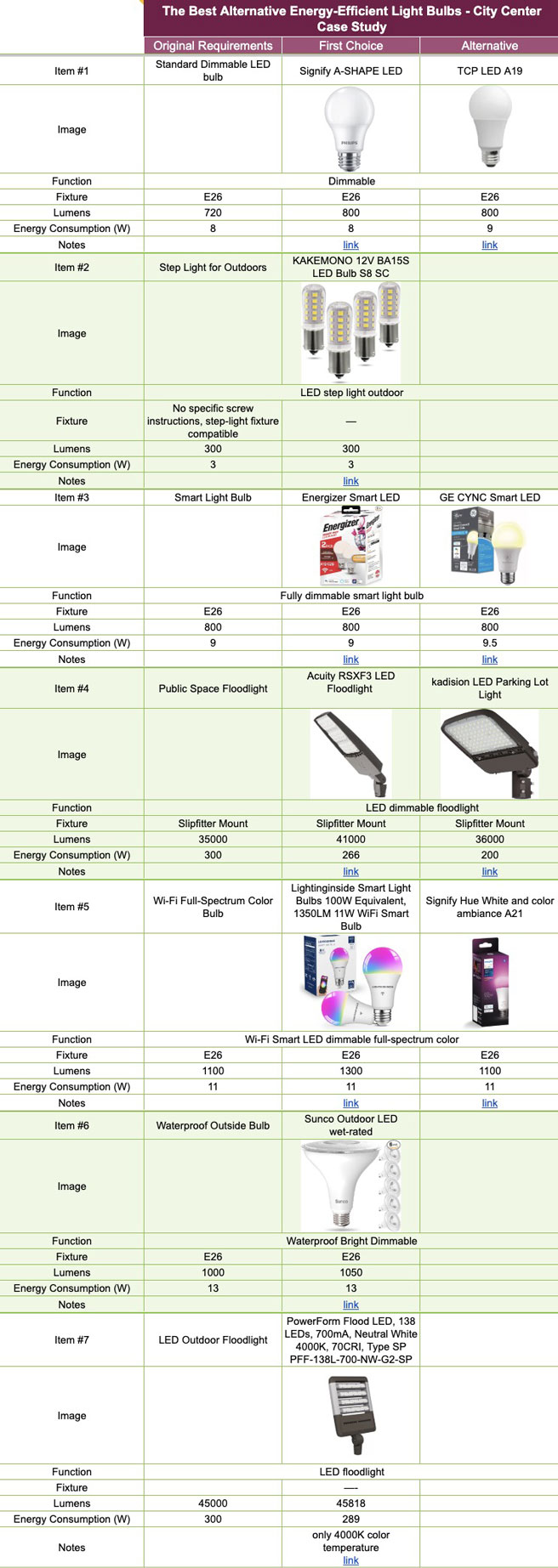
The Best Energy-Efficient Light Bulbs – City Center Case Study – Click for the open source spreadsheet
ITEM #1
Item 1 in the table displayed above corresponds to a dimmable, warm white, conventional light bulb for the City Center.
FIRST CHOICE: SIGNIFY A-SHAPE LED
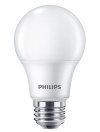 Following a meticulous examination of Signify’s product category, we have identified a superior alternative for the initial item on our list. Signify’s A-Shape LED 8A19/PER/830/FR/P/E26/D 4/4CT also functions as a warm white (3000k) dimmable light bulb and maintains identical energy consumption to the previous model. However, it offers an improved luminous flux, boasting a value of 800 lumens compared to the previous 720 lumens. This light bulb is extremely energy-efficient because it only uses 8 wattage, equivalent to 60 watts. Instant illumination is possible due to the warm-up period of just 0.5 seconds for reaching 60% light output.
Following a meticulous examination of Signify’s product category, we have identified a superior alternative for the initial item on our list. Signify’s A-Shape LED 8A19/PER/830/FR/P/E26/D 4/4CT also functions as a warm white (3000k) dimmable light bulb and maintains identical energy consumption to the previous model. However, it offers an improved luminous flux, boasting a value of 800 lumens compared to the previous 720 lumens. This light bulb is extremely energy-efficient because it only uses 8 wattage, equivalent to 60 watts. Instant illumination is possible due to the warm-up period of just 0.5 seconds for reaching 60% light output.
KEY FEATURES
- Power Consumption: 8 W
- Brightness: 800 lumens
- Efficacy: 100 lm/W
- Color Temperature: 3000k (Soft White)
- Color Rendering Index (CRI): 80 (Good)
- Cap-Base: E26 [Single Contact Medium Screw]
- Wattage Equivalent: 60 W
- Starting Time (Nom): 0.5 s
- Warm-up time to 60% light: 0.5 s
- Line Frequency: 60Hz
- Lamp Current (Nom): 90mA
- Voltage (Nom): 120V
- Switching Cycle: 50,000
- Nominal lifetime: 15,000 hour(s)
- LLMF At End Of Nominal Lifetime (Nom): 70%
ADDITIONAL INFORMATION
ALTERNATIVE: TCP LED A19
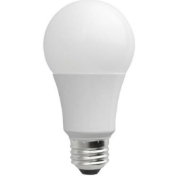 The TCP L9A19D2527K LED A19 lamp is an excellent choice for a lightbulb due to its energy efficiency and long lifespan. Offering a warm 2700K color temperature, it creates a comfortable ambiance while using significantly less energy than traditional incandescent bulbs. Its durable design and reliable performance make it ideal for an Item 1 choice, delivering cost savings and eco-friendly lighting. The reason it is an alternative rather the first choice lies in the sustainability rating of TCP as a company, which has a lot of space for improvement.
The TCP L9A19D2527K LED A19 lamp is an excellent choice for a lightbulb due to its energy efficiency and long lifespan. Offering a warm 2700K color temperature, it creates a comfortable ambiance while using significantly less energy than traditional incandescent bulbs. Its durable design and reliable performance make it ideal for an Item 1 choice, delivering cost savings and eco-friendly lighting. The reason it is an alternative rather the first choice lies in the sustainability rating of TCP as a company, which has a lot of space for improvement.
KEY FEATURES
- Power Consumption: 9 W
- Brightness: 800 lumens
- Efficacy: Approximately 88.9 lm/W
- Color Temperature: 2700K (Warm White)
- Color Rendering Index (CRI): 80
- Cap-Base: E26 (Medium Screw)
- Wattage Equivalent: 60 W
- Voltage (Nom): 120V
- Nominal Lifetime: 15,000 hours
ADDITIONAL INFORMATION
ITEM #2
Item 2 represents a lightbulb compatible with a step light fixture for illuminating the outside areas of the City Center. There was only one product option found for this item category.
FIRST CHOICE: KAKEMONO LED BULB S8 SC
KEY FEATURES
- Power Consumption: 3 W
- Brightness: 300 lumens
- Efficacy: Approximately 100 lm/W
- Color Temperature: 6000K (Daylight White)
- Cap-Base: BA15S (Bayonet Single Contact Base)
- Wattage Equivalent: 50 W halogen replacement
- Voltage (Nom): AC 10-18V / DC 10-24V
ADDITIONAL INFORMATION
ITEM #3
Item 3 is described as a fully dimmable smart light bulb, which means the bulb’s brightness can be controlled remotely via a remote device other than the wall switch.
FIRST CHOICE: ENERGIZER SMART LED
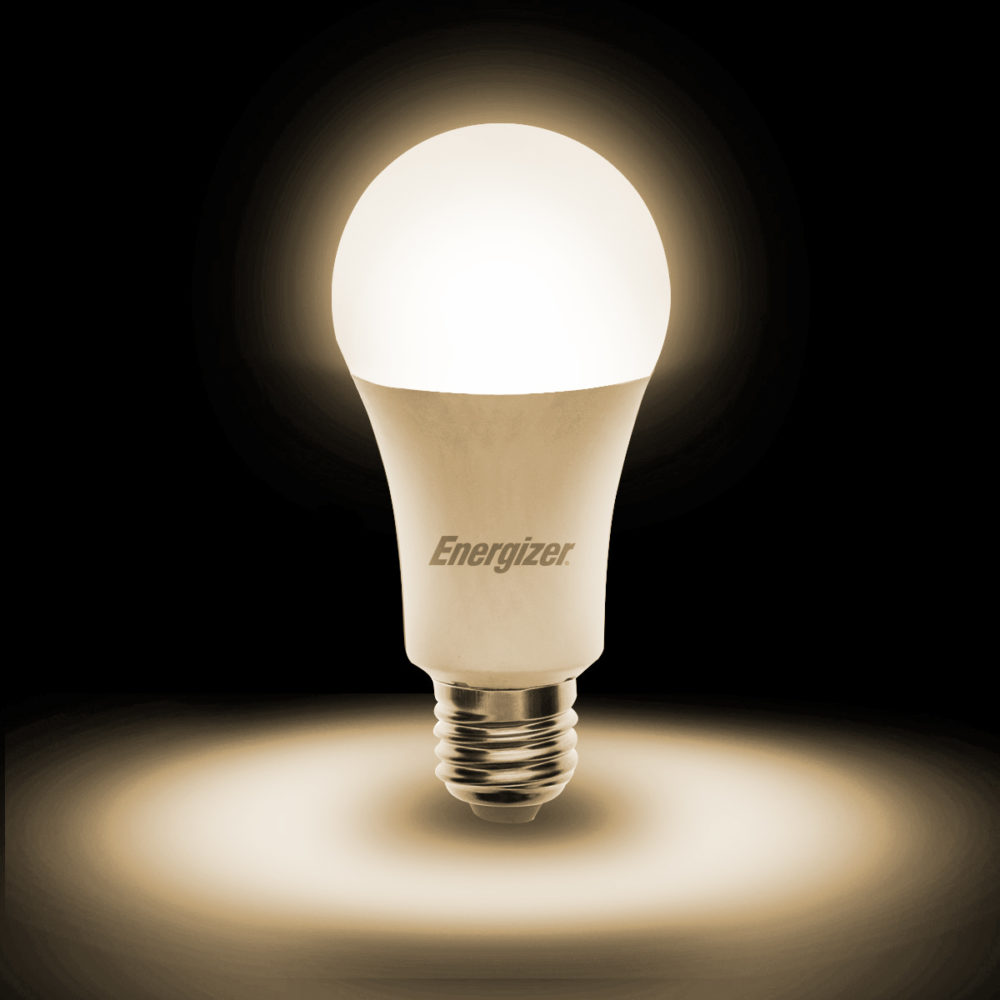 The Energizer Connect Smart LED Warm White Light Bulb is an excellent choice for a fully dimmable smart light bulb due to its seamless app-controlled dimming feature, allowing precise control of brightness levels to suit any mood or setting. Its compatibility with popular voice assistants enhances convenience, while the 2700K warm white light creates a cozy ambiance, making it ideal for versatile lighting solutions in homes or offices.
The Energizer Connect Smart LED Warm White Light Bulb is an excellent choice for a fully dimmable smart light bulb due to its seamless app-controlled dimming feature, allowing precise control of brightness levels to suit any mood or setting. Its compatibility with popular voice assistants enhances convenience, while the 2700K warm white light creates a cozy ambiance, making it ideal for versatile lighting solutions in homes or offices.
KEY FEATURES
- Power Consumption: 9 W
- Brightness: 800 lumens
- Efficacy: Approximately 88.9 lm/W
- Color Temperature: 2700K (Warm White)
- Cap-Base: E26
- Wattage Equivalent: 60 W
- Lamp Current (Nom): 140 mA
- Voltage (Nom): 120 V
ADDITIONAL INFORMATION
ALTERNATIVE: GE LIGHTING CYNC SMART LED
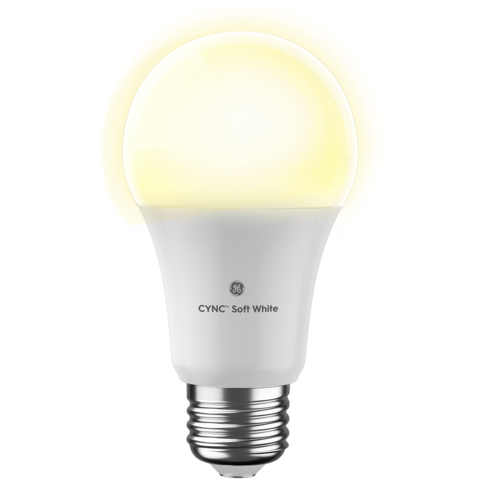 The GE Cync A19 Smart LED Light Bulb is an excellent choice for a fully dimmable smart light bulb due to its seamless integration with Alexa and Google Assistant, allowing for hands-free voice control. Its soft white light creates a comfortable ambiance, and the ability to schedule lighting ensures convenience and energy efficiency. Its slightly larger energy consumption of 9.5 W makes it an alternative rather than our first choice.
The GE Cync A19 Smart LED Light Bulb is an excellent choice for a fully dimmable smart light bulb due to its seamless integration with Alexa and Google Assistant, allowing for hands-free voice control. Its soft white light creates a comfortable ambiance, and the ability to schedule lighting ensures convenience and energy efficiency. Its slightly larger energy consumption of 9.5 W makes it an alternative rather than our first choice.
KEY FEATURES
- Power Consumption: 9.5 W
- Brightness: 800 lumens
- Efficacy: Approximately 84.2 lm/W
- Color Temperature: 2700K (Soft White)
- Cap-Base: E26 (Medium Base)
- Wattage Equivalent: 60 W
- Voltage (Nom): 120 V
ADDITIONAL INFORMATION
ITEM #4
Item 4 is an LED dimmable floodlight that uses a slipfitter mount and illuminates large outdoor public spaces.
FIRST CHOICE: ACUITY BRANDS RSXF3 LED FLOODLIGHT
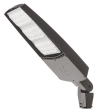 The RSXF3 LED Floodlight by Lithonia Lighting is a high-output, versatile fixture designed for powerful, energy-efficient lighting. Ideal for outdoor applications like parking lots, building perimeters, and sports fields, it delivers up to 41,000 lumens. This floodlight offers multiple mounting options and optical distributions, ensuring tailored lighting for various settings. Constructed to withstand harsh environments, it combines durability with optimal performance for reliable long-term use. Despite using more energy than mentioned in the table, this floodlight produces significantly brighter light, making it more efficient, and thus, our first choice
The RSXF3 LED Floodlight by Lithonia Lighting is a high-output, versatile fixture designed for powerful, energy-efficient lighting. Ideal for outdoor applications like parking lots, building perimeters, and sports fields, it delivers up to 41,000 lumens. This floodlight offers multiple mounting options and optical distributions, ensuring tailored lighting for various settings. Constructed to withstand harsh environments, it combines durability with optimal performance for reliable long-term use. Despite using more energy than mentioned in the table, this floodlight produces significantly brighter light, making it more efficient, and thus, our first choice
KEY FEATURES
- Power Consumption: 266 W
- Brightness: 41,000 lumens
- Efficacy: 154 lm/W
ADDITIONAL INFORMATION
ITEM #5
Item 5 corresponds to a Wi-Fi Full-Spectrum Color Bulb, meaning the bulb must be controlled via a smartphone application in addition to the conventional switch, and can take any RGB spectrum color.
FIRST CHOICE: LIGHTINGINSIDE WIFI SMART BULB
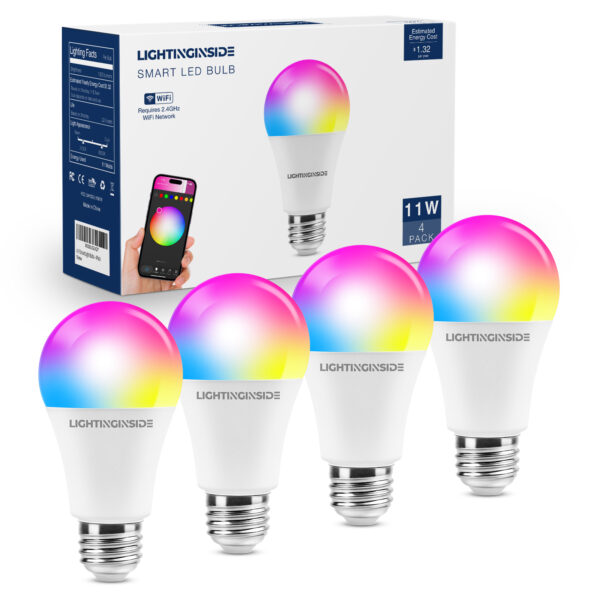 The Wi-Fi Smart Full Spectrum Light Bulb is a great choice due to its versatile 2700-6500K color temperature range, allowing for customizable lighting from warm to cool tones. It integrates easily with Alexa and Google Home, offering voice control, and is fully dimmable for different ambiance needs. Its RGB color-changing feature and no-hub-required setup make it ideal for creating personalized lighting in any space, whether for general illumination or special lighting effects. This product’s brightness being 200 lumens brighter than our requirement without consuming extra energy makes it our first choice.
The Wi-Fi Smart Full Spectrum Light Bulb is a great choice due to its versatile 2700-6500K color temperature range, allowing for customizable lighting from warm to cool tones. It integrates easily with Alexa and Google Home, offering voice control, and is fully dimmable for different ambiance needs. Its RGB color-changing feature and no-hub-required setup make it ideal for creating personalized lighting in any space, whether for general illumination or special lighting effects. This product’s brightness being 200 lumens brighter than our requirement without consuming extra energy makes it our first choice.
KEY FEATURES
- Power Consumption: 11W
- Brightness: 1300 lumens
- Efficacy: 118 lm/W
- Color Temperature: 2700-6500K
- Cap-Base: E26
- Wattage Equivalent: 100W
- Voltage (Nom): 110-130V AC
- Nominal Lifetime: 25,000 hours
ADDITIONAL INFORMATION
ALTERNATIVE: SIGNIFY HUE WHITE AND COLOR AMBIANCE A21
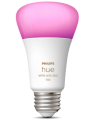
Item 5 is an E26 Dimmable Multi Colored LED light bulb with 11W power consumption and 1100 Lumens light intensity. When filtering options based on these specifications (Colored light- Single pack-E26-Dimmable-Bulb), and comparing between the remaining options according to power consumption, we ended up with an alternative that has the same function and light intensity, but a maximum power operation of 10.5W. This option is Energy Star Certified, has a 3 year warranty (compared to 2 years), and a lifetime of 25,000 hours. Its worse efficacy makes this choice an alternative.
KEY FEATURES
- Power Consumption: 10.5 W
- Brightness: 1100 lumens
- Efficacy: 104 lm/W
- Color Temperature: 2000K-6500K (multi-color)
- Cap-Base: E26
- Wattage Equivalent: 75 W
- Starting Time (Nom): Instant 100% light output
- Voltage (Nom): 110V-130V
- Switching Cycle: 50,000
ADDITIONAL INFORMATION
ITEM #6
Item 6 is a waterproof dimmable bulb for outside use. Intended for outdoor spaces, it should be able to withstand various weather conditions. Due to the limited availability of products fulfilling our requirements, only the first choice is presented with no alternatives.
FIRST CHOICE: SUNCO PAR38
This PAR38 LED spotlight is an excellent choice for an outdoor light bulb due to its waterproof and weatherproof design, ensuring durability in various conditions. Its dimmable feature allows for flexible brightness control, while its UL certification guarantees safety and performance. With advanced flicker-free LED technology and a long lifespan, it provides reliable, energy-efficient outdoor lighting for ambiance.
KEY FEATURES
- Power Consumption: 13W
- Brightness: 1050 lumens
- Efficacy: 80.77 lm/W
- Color Temperature: 3000 K (Warm White)
- Color Rendering Index (CRI): 90
- Cap-Base: E26
- Voltage (Nom): 120 V
- Nominal Lifetime: 25,000 hours
ADDITIONAL INFORMATION
ITEM #7
Item 7 represents a standard LED floodlight for various applications indoors and outdoors.
FIRST CHOICE: SIGNIFY POWERFORM LED
The PowerForm LED High Output Floodlight PFF Gen2 is designed for industrial applications, offering powerful illumination with energy efficiency. Its high lumen output, robust build, and adaptability make it suitable for large outdoor spaces requiring reliable and consistent lighting. The floodlight is UL-listed and incorporates advanced optics to deliver precise lighting for enhanced visibility and security.
KEY FEATURES
- Power Consumption: 289W
- Brightness: 45818 lumens
- Efficacy: 158 lm/W
- Color Temperature: 3000 K – 4000 K
ADDITIONAL INFORMATION
BEST ENERGY-SAVING PRACTICES AND LIGHTING ACCESSORIES
 Energy-saving lighting practices play a vital role in sustaining the world’s resources and preventing excessive use of energy, which can help lower carbon emissions and electricity costs. The University of Saskatchewan produced a great general guide for energy saving practices. From that guide, here is a list of actions you can take to enhance the sustainability of the lightbulbs you purchase and your lighting practices:
Energy-saving lighting practices play a vital role in sustaining the world’s resources and preventing excessive use of energy, which can help lower carbon emissions and electricity costs. The University of Saskatchewan produced a great general guide for energy saving practices. From that guide, here is a list of actions you can take to enhance the sustainability of the lightbulbs you purchase and your lighting practices:
- Optimize Daylight: The easiest way to save energy is to rely more on natural daylight rather than artificial lighting. Having natural light in buildings reduces the demand for electricity.
- Smart Positioning: Instead of having excessive overhead lighting, placing task lighting on desks and workstations reduces the need to have extra lightning. Additionally, strategically placing lightning to bounce off reflective surfaces reduces the amount of lighting fixtures necessary to illuminate a room.
- Pick the Right Type of Lightbulb: Make sure not to overly light a room. Choose lightbulbs whose brightness matches the purpose of the room. After all, there’s no need to light a bedroom the same way you light a functional office.
- Switch to LED lights: Compared to other types of lighting such as conventional incandescent or fluorescent, LED uses up to 90% less energy and can last up to 25 times longer.
- Multiple Switches: If you’re going to install lighting in a large open-plan space, multiple switches should be installed so that you aren’t wasting energy when you’re only using a certain section of the space.
- Install Dimmers: Dimmers reduce the amount of electricity a light will use. Additionally, it can increase the lifespan of certain types of lighting.
- Install Motion Detectors: Using built-in motion sensors is a great way to make sure lights only operate when needed.
- Clean Your Lights: Dusty lightbulbs can actually obstruct as much as half the light. Making sure your lightbulbs are clean is essential for getting the maximum amount of light from them.
- Select Certain Paint Colors: Darker paint in a room tends to keep a space darker as it absorbs available light while lighter colors reflect light, meaning that the energy you are utilizing is more efficient.
- Use Open Floor Plans: Open floor plans are great for lighting efficiency, as light is allowed to flow freely throughout all levels of a structure.
THE CASE FOR INCANDESCENTS
Paul Wheaton, through his podcasts (see Paul Wheaton’s Anti-LED views on LED & Paul Wheaton’s Anti-LED views on LED – Part 2) and the book Building a Better World EPub Book – Paul Wheaton, has conveyed strong opinions on the benefits of using Incandescent bulbs and the downsides of using LEDs.
BENEFITS OF INCANDESCENT BULBS:
Paul considers that Incandescent bulbs remain the most environmentally friendly bulb of 2019, in most cases, despite all the modern innovation. The following section details the case for Incandescent bulbs.
BIG ENERGY SAVINGS (COLD CLIMATES)
In places like Montana, when it gets cold outside, the days get much shorter. When we need more light, we also happen to need more heat. And incandescent light has two big properties, namely:
- High quality of light
- Radiant heat
Radiant heat when pointed at a person is far more efficient than convective heat, which is the common way that people heat their home. Heat from the incandescent bulb can be used as focused heating on an individual rather than heating the surrounding air. This can curb the energy wastage in the current heating system for heating large spaces when concentrated heating would just do the trick.
If you live in a cold climate and use incandescent bulbs, Paul points out that the electricity is effectively free in the winter because the lights are providing heat that allows your heater to come on less.
ENERGY SAVINGS SPECIFICS/CALCULATIONS
To calculate the heat release for incandescent bulbs compared to LED bulbs in a normal apartment, we’ll use the following assumptions:
- Incandescent Bulb: 60 watts
- LED Bulb: 9 watts
- Number of Bulbs: 10
- Hours of Use per Day: 5 hours
- Number of Days per Year: 365
Heat Release Calculation:
For each type of bulb, we’ll calculate the daily and annual heat release:
INCANDESCENT BULBS
Daily heat release per bulb = 60 watts * 5 hours = 300 watt-hours (or 0.3 kilowatt-hours, kWh)
Daily heat release for all 10 bulbs = 0.3 kWh/bulb * 10 bulbs = 3 kWh
Annual heat release for all 10 incandescent bulbs = 3 kWh/day * 365 days = 1,095 kWh
LED BULBS
LED bulbs are much more energy-efficient and release significantly less heat. The daily heat release for all 10 LED bulbs is essentially the same as the daily energy consumption, which is 0.45 kWh.
Annual heat release for all 10 LED bulbs = 0.45 kWh/day * 365 days = 164.25 kWh
So, in this hypothetical scenario, if you have 10 bulbs in your apartment and use them for 5 hours a day, the annual heat release for incandescent bulbs would be approximately 1,095 kWh, while the annual heat release for LED bulbs would be approximately 164.25 kWh. This illustrates the substantial difference in heat generation between incandescent and LED bulbs. LED bulbs are much cooler during operation, which can help reduce the indoor temperature and the load on cooling systems in your apartment.
Here’s a graphic showing this comparison
THE CASE AGAINST LEDS
While LEDs are highly energy-efficient and long-lasting, they are not always the best option for every application. For example, LEDs can have a higher upfront cost compared to other types of lightbulbs, which may not be feasible for some budgets, especially in large-scale projects. Additionally, LEDs may not perform well in certain environments, such as extreme heat, where their lifespan and efficiency can be compromised. The quality of light emitted by some LEDs, especially cheaper models, may not provide the warmth or natural color rendering desired for specific settings, such as art galleries or cozy residential spaces. Furthermore, LED lightbulbs are made with electronic components, which can complicate recycling and disposal, potentially creating electronic waste if not handled properly. For these reasons, alternatives like CFLs, halogens, or even traditional incandescent bulbs may still be better suited in particular situations. See the details about why LEDs are not always the best light bulb option below.
TOXICITY
Toxicity due to light bulbs can be categorized in three ways
- Manufacturing
- Usage
- Disposal
CFLs are toxic in all three stages. LEDs are said to have 1/3 toxins of CFL and are 12 times more than that of incandescent bulbs.
LED MANUFACTURING AND USAGE
LEDs are more sophisticated built with electronic components like resistors and capacitors. They are said to be half toxic than CFL, 100 times more than that of Incandescent. LEDs are more toxic during manufacture as they need a driver circuit, LED panel and a heat sink. A study in UC Irvine showed that LEDs are loaded with lead arsenic and other toxins that cause a variety of ailments. Incandescent bulbs have some toxins in manufacture and disposal, but they are small.
LED DISPOSAL
LEDS are either thrown to landfill or recycled.There are many harmful effects of recycling electronics and how LEDs can contribute to it. Consumers need to rationalize the energy savings against the toxicity in manufacture & recycling of LED when making their decision to purchase the right bulb.
HEALTH EFFECTS OF LED
Spectral analysis on a variety of LED bulbs and have found some that do a very good job of emulating natural daylight. The person doing the analysis claims that it was the ultimate test that proves that LED was better than incandescent bulbs. After all, natural daylight is helpful in
- Elevating mood
- Increasing attention span and
- Improving one’s reaction time.
Cool white LED’s produce a lot of blue light like natural daylight. Natural sunset light has very little blue in it and a lot more orange and red. Research has shown that blue light in the evening suppresses the secretion of melatonin.
Unfortunately, particular elements used in the production of blue light LEDs happen to be the most economical and efficient ones around. Switching the spectrum to be more in line with sunset or an incandescent bulb would be impacting both the cost and efficiency which might put a damper on the sales.
As for health issues for LED lights during their use, LEDs are still relatively new. So far, LED lights have been proven to mess with sleep cycles. It also has the potential to cause problems for people with epilepsy and contribute to malaise, headaches, and visual impairments. And apparently infrared light, which LED produces almost none of, is extremely important for all sorts of biological functions such as eye health and cellular energy production.
RESOURCES
Here are any other resources we’ve found (or that have been shared with us) and we think may be helpful:
- Article: “The 10 Best and Most Popular LED Bulb Brands For Your Home”.
- Article: “A Quick Guide to Eco-Friendly Light Bulbs”.
- Article: “Lighting choices to save your money”
- Article: Signify Supplier Sustainability Declaration: Signify demands certain standards and behaviors from their suppliers in order to improve working conditions for employees and support a cleaner environment for nearby communities, which are outlined in the Signify Supplier Sustainability Declaration.
- Article: 2020 GE lighting sustainability report
- Article: “Halogen Light Bulbs”
- Article: “Get to know your light bulbs with our comprehensive type guides”
- Article: “Philips: Driving climate action in our own operations and beyond”
- Article: “How Acuity Brands is Pioneering Corporate Sustainability”
- Article: “GE lighting commits to carbon neutral 2030 goal”
- Article: “Eaton: Minimizing our water use enhances operational excellence, reduces strain on vital community resources”
- Article: “Eaton: Reducing greenhouse gas emissions reflects our vision”
- Article:”Eaton: Waste reduction”
- Article: “Eaton sustainability: waste reduction”
- Article: “The Road to Net Zero Starts With A Single Step”
- Article: “Osram commits to becoming climate neutral by 2030”
- Article: Energy Star: Compact Fluorescent Light Bulbs (CFLs) and Mercury
- Article: Home Depot: Recessed Lighting
- Product Description: Signify A-Shape LED | Specs
- Product Description: Signify LED BR40 | Specs
- Product Description: Signify Slim Flood LED Dual Select | Specs
- Product Description: Signify A19 – E26 Smart Bulb – 75 W Equivalence | Specs
- Article: Paul Wheaton’s Anti-LED views on LED
- Article: Paul Wheaton’s Anti-LED views on LED – Part 2
- Article: Building a Better World EPub Book – Paul Wheaton`
SUMMARY
 When choosing the best sustainable lightbulb for your home, we’d advise that you buy LED lights since they are more energy-efficient and last longer, making them more environmentally-friendly than incandescent and CFL bulbs. We included guides on how to choose the best lightbulbs and how to read a lightbulb label. Besides picking a sustainable lightbulb, we also thought it was important to know some basic energy-saving practices and lightning accessories.
When choosing the best sustainable lightbulb for your home, we’d advise that you buy LED lights since they are more energy-efficient and last longer, making them more environmentally-friendly than incandescent and CFL bulbs. We included guides on how to choose the best lightbulbs and how to read a lightbulb label. Besides picking a sustainable lightbulb, we also thought it was important to know some basic energy-saving practices and lightning accessories.
After an assessment of various sustainable lightbulb brands, we identified the five best brands and ranked them accordingly based on their sustainability goal/initiatives. We concluded that Signify (formerly Philips Lighting) was the best company in terms of sustainability and highlighted some of their best products. We also highlighted other sustainable lighting companies and some of their best products.
FREQUENTLY ASKED QUESTIONS
Q: What lightbulb options are there?
The three most common types are LED lights, CFLs, and incandescent bulbs.
Q: Out of all three lighting options listed above, which one should I choose?
We recommend LED lights.
Q: Why are LED lights more energy efficient?
They require much less wattage than CFLs and incandescent bulbs. They also last longer and are much more durable.
Q: What determines if a lightbulb brand is sustainable or not?
Each company was benchmarked looking at five different categories of sustainability. These consisted of:
- if there was a sustainability presence on their website
- if there was a current sustainability report on their website or available to the public
- what are their sustainability goals
- what are their sustainability initiatives
- what partnerships/collaborations do they have with other organizations
Q: What is the most sustainable lightbulb brand?
Signify has been concluded to be the most sustainable lightbulb brand because of its commitment to sustainable manufacturing and transparency.
Q: What are the ways through which consumers can recycle the light bulbs after the end of life of the bulb?
The most common ways are:
- The retailers that sell LED bulbs’ take-back programs . They may provide collection bins in their stores where you can drop off old bulbs for recycling.
- The manufacturers have their own recycle programs that can provide the mailing services to collect them.
Q: How do companies recycle light bulbs?
Parts that can be recyclable in an LED bulb are glass, aluminum and circuit boards. Our selected products in this page were all LED and they can be highly recycled. Refer to the Table Sustainability Benchmarking of Top Light Bulb Companies. It lists detailed recycling goals and progress for the selected companies.
Q: What are some eco-friendly ways that companies adopt for disposal of any unwanted products?
Many of the light bulb companies have started on the path of being carbon neutral by planning for zero waste going to landfills as part of their climate action plans. Refer to the table Metric 3: Landfill Waste Reduction in the Sustainability Benchmarking Of Top Light Bulb Companies table.
Q: What are some eco-friendly ways that companies adopt for disposal of any unwanted products?
Some manufacturers have their own recycle programs that can provide the mailing services to collect them.
 One Community
One Community







